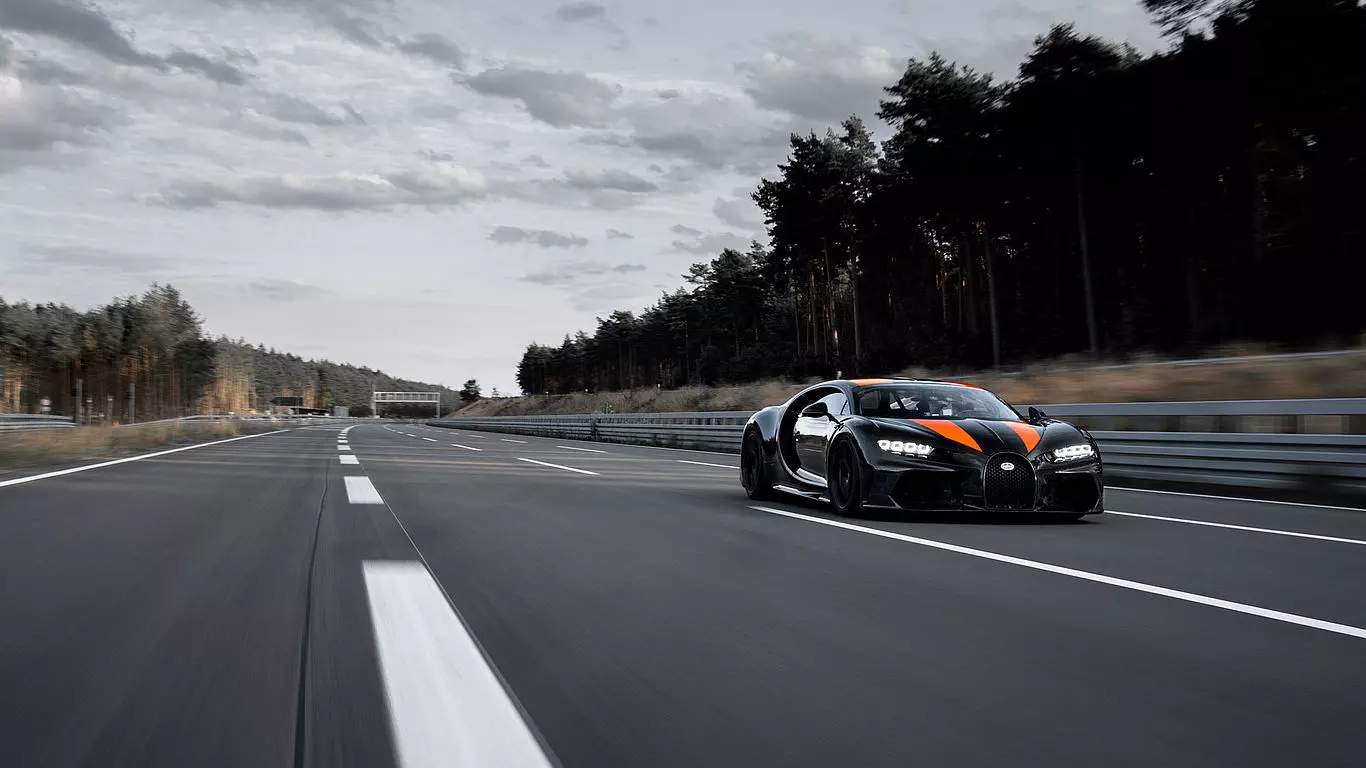At 490kmph, modified Bugatti Chiron sets new top-speed record
A near production prototype Bugatti Chiron is the new king of speed; the Bugatti hypercar hit 490.484kmph at Volkswagen’s test facility in Germany.

Bugatti has been at the forefront of breaking world speed records for production cars in this century. The quad-turbocharged Veyron EB 16.4 snatched the title from the twin-supercharged Koenigsegg CCR in 2005 after hitting a speed of 408.47kmph. Two years later, in 2007, the American SSC Ultimate Aero TT reached a two-way average top speed of 412.28kmph. The Bugatti Veyron 16.4 Super Sport broke the record in 2010 and held it for seven years (431.02kmph) till the Koenigsegg Agera RS shattered it in 2017, hitting 447.19kmph. And now two years later, Bugatti is back in the race with another record breaking attempt, this time with the Chiron.
A new world speed record
On August 2, 2019, Andy Wallace, former Le Mans champion and Bugatti’s test driver, hit 490.484kmph in a modified Bugatti Chiron at Volkswagen’s test facility in Ehra-Lessien, just outside of Wolfsberg in Germany. For the first time ever, a manufacturer was able to break the magical 300mph barrier. Many of us were expecting the Hennessey Venom F5 or the SSC Tuatara to get there first, but Bugatti being Bugatti has taken the world by surprise, just like they did before with the Veyron and the Veyron Super Sport.
ये à¤à¥€ पà¥�ें- A 1000bhp McLaren Senna by Hennessey Performance
According to Bugatti, this was a ‘pre-production vehicle of the Chiron derivative’. This very much hints at the record setting hypercar to be the upcoming Chiron Super Sport. Also, this velocity was verified by SGS-TUV SAAR, Germany’s Technical Inspection Association. The German association considers a one-way speed while the Guinness World Records take the average of a two-way run.
What’s new in the modified Bugatti Chiron?
What’s noticeably different in this record setting hypercar is the all-carbonfibre bodywork. It looks longer than the standard Chiron’s, with an extended rear overhang and tail in a similar vein to that seen on the McLaren Speedtail. The hydraulically actuated rear wing maintains its position relevant to the rear axle, though, meaning the trailing edge of the bodywork is fixed, with a redesigned lower diffuser and vertically stacked exhaust outlets helping clean the airflow. The nose is also new, and features a deeper splitter, a wider grille and more heavily raked headlight openings. There are also nine small portholes drilled into each of the front wings, likely reducing air pressure in the wheelarches to keep the front axle on the ground.
Like scenic locations and powerful cars? Follow us on Instagram, Facebook and Twitter
What’s also interesting is the fact that the Ehra-Lessien test facility is 50 metres above sea level. This is a drawback as the air density is much higher. “Air pressure, air density and temperature are very important for high-speed driving and can make a difference of up to 25 kmph, depending on the altitude,” says Bugatti’s head of development, Stefan Ellrott. Had this been at Nevada, which is at a much higher altitude, the results would have been different. Would the Chiron reach 500kmph there? Let’s drool over that for a bit.


